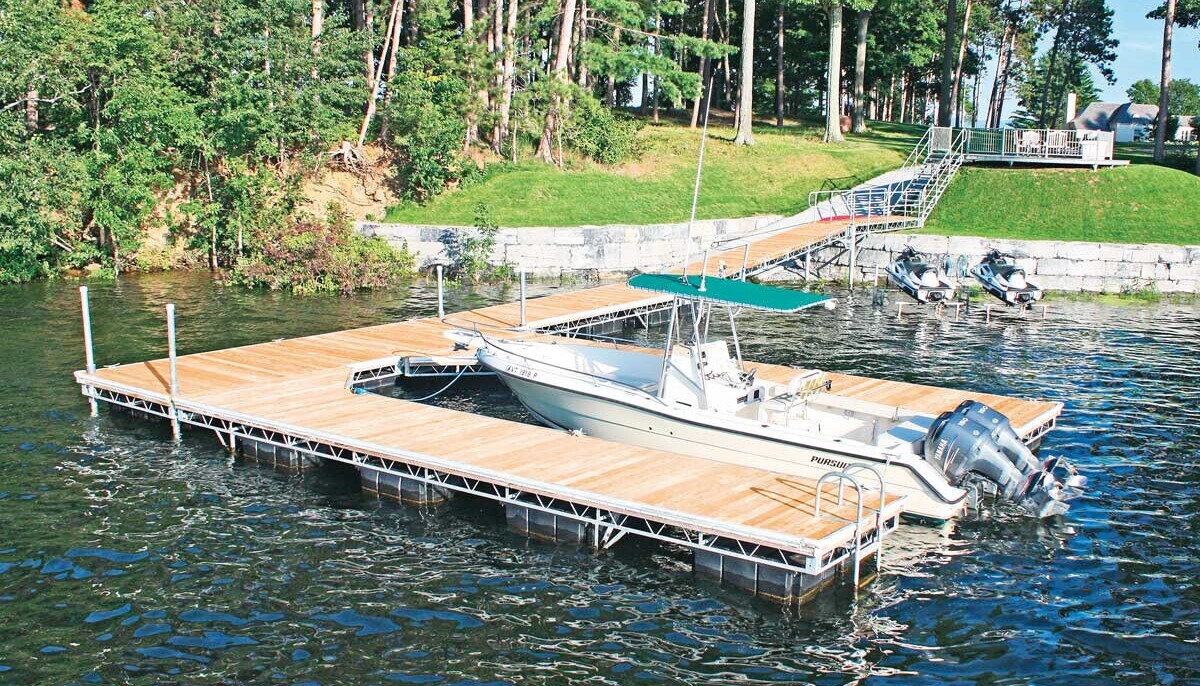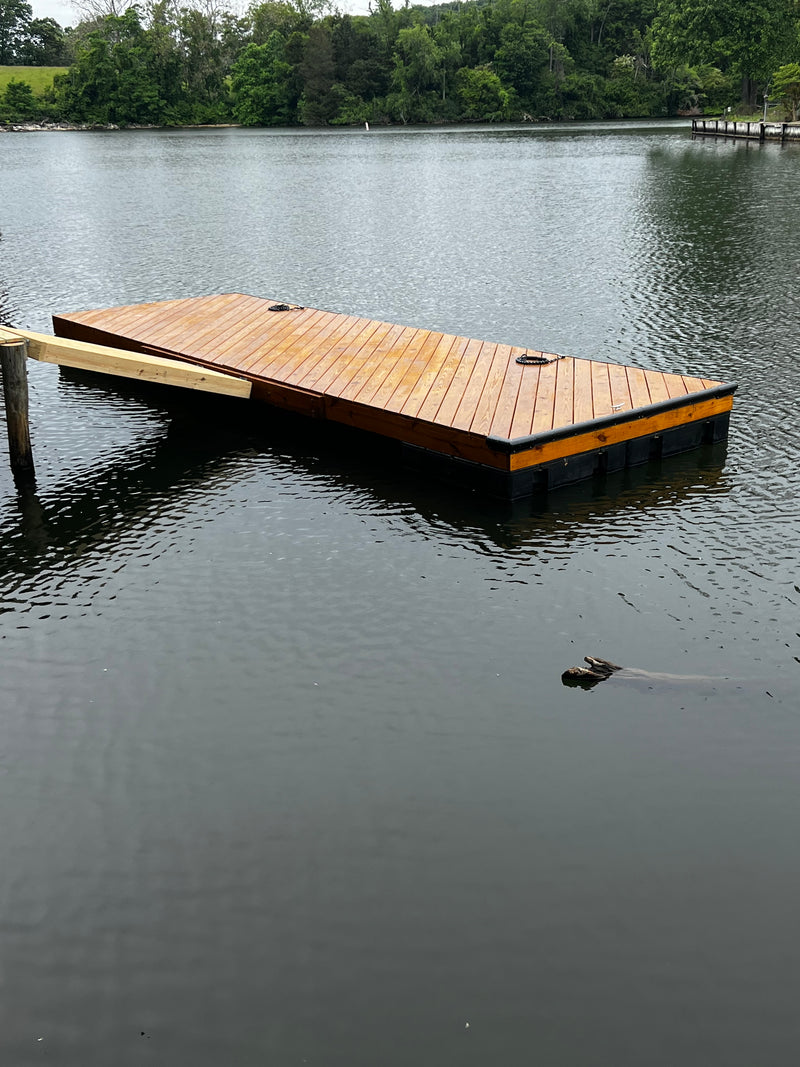Maximizing Your Outdoor Area with Specialized Floating Dock Solutions
Maximizing Your Outdoor Area with Specialized Floating Dock Solutions
Blog Article
Produce the Perfect Docking Option With Floating Docks
Floating docks present a flexible solution for a range of maritime demands, adapting flawlessly to fluctuating water degrees and diverse vessel kinds. Their modular nature permits fast installment and relocation, yet the option of proper products and style functions is essential for guaranteeing both functionality and aesthetic appeal. As we discover the crucial elements that add to the effectiveness of floating docks, a number of crucial aspects relating to security and upkeep will certainly emerge, questioning regarding how to optimize your docking experience. The succeeding conversation will certainly brighten these vital considerations.

Advantages of Floating Docks
Floating docks offer numerous advantages that make them an excellent choice for various maritime applications. One of the main benefits is their versatility to altering water levels. Unlike dealt with docks, floating docks fluctuate with the trend, making certain regular access for vessels. This feature is particularly important in areas vulnerable to significant tidal variations or seasonal water degree adjustments.
Additionally, floating docks are commonly much easier and quicker to set up compared to traditional set structures. Their modular design enables uncomplicated assembly and disassembly, assisting in upkeep and moving when required. This flexibility is particularly valuable for short-lived applications or in environments where problems may change.
Floating docks additionally tend to be a lot more eco pleasant, as they lessen disruption to the seabed and bordering aquatic environments. Their buoyant nature decreases the risk of damages to marine life, advertising a much healthier atmosphere. These docks can be customized to fit numerous vessel dimensions, making certain that they fulfill specific functional demands.
Inevitably, the mix of adaptability, simplicity of installation, and environmental factors to consider makes floating docks an extremely reliable remedy for a variety of maritime demands.
Choosing the Right Materials
Selecting the proper products for floating docks is critical to ensure stability, longevity, and toughness. The selection of materials straight affects the dock's performance in different ecological conditions, including direct exposure to water, sunlight, and prospective wear from marine website traffic.
Usual products utilized for floating docks consist of aluminum, timber, and high-density polyethylene (HDPE) Aluminum is light-weight, corrosion-resistant, and calls for very little maintenance, making it an excellent selection for durability. Nonetheless, its first cost can be higher contrasted to other materials.
Timber, while cosmetically attractive and offering a traditional appearance, can be prone to rot and bug damages if not appropriately treated. Therefore, making use of pressure-treated timber or naturally sturdy varieties like cedar or redwood can alleviate these issues.
HDPE is a popular selection due to its resistance to UV rays and chemicals, together with being eco-friendly. floating dock builder. It is lightweight and offered in numerous colors, permitting personalization
Inevitably, the best material option will certainly depend upon specific requirements, including spending plan, wanted visual appeals, and environmental considerations. Cautious analysis of these factors will certainly cause a resilient and successful floating dock solution.
Design Considerations for Stability
When making floating docks, making certain stability is an essential aspect that can significantly impact their functionality and safety and security. Security in floating dock design is affected by numerous variables, consisting of buoyancy, weight circulation, and the arrangement of elements. An optimal buoyancy system should utilize products that provide sufficient lift while minimizing weight. This equilibrium ensures that the dock stays above water, also under varying lots.
Weight distribution is important; uniformly dispersing tons throughout the dock avoids tilting and improves stability. This can be accomplished with calculated positioning of docking devices, such as fenders and cleats, along with correct spacing of floats. Additionally, the dimensions of the dock ought to be thoughtfully intended. Bigger layouts can supply increased security, especially in harsh water problems, while longer docks might call for additional assistances to stop sagging.
An additional crucial consideration is the environmental impact, consisting of wave action and wind. Incorporating attributes such as you could look here sidewalls or skirting can aid minimize the impacts of environmental pressures, preserving stability in adverse problems. Inevitably, a combination of thoughtful style, material choice, and understanding of ecological elements will certainly produce a drifting dock that meets both security and safety needs.
Installation Tips and Strategies

Next, protect the essential authorizations and comply with neighborhood laws, which may dictate installation approaches and ecological factors to consider. Engage a qualified specialist experienced in floating dock installations if called for. Use top quality materials developed for marine settings to enhance sturdiness and longevity.
When placing the dock, straighten it alongside the coastline to assist in easy access. Ensure that the anchoring system is robust, using concrete blocks or helical anchors to stabilize the dock versus wind and wave activity. It's critical to represent seasonal water level variations, consisting of prospective ice movement in chillier climates.
Throughout the installation, confirm the dock's floatation and security before finalizing the anchoring. Frequently inspect the installment for any signs of wear or damages. By adhering to these methods and tips, you can attain a safe, functional, and visually pleasing floating dock setup that meets your requirements.
Maintenance and Care Standards
Caring and maintaining for floating docks is important to prolonging their lifespan and making sure secure use. Regular evaluations need to be performed to identify any kind of indicators of wear, damage, or marine growth. Search for fractures, loosened fittings, or tarnished areas on the dock's surface area, as these problems can jeopardize architectural honesty.
Cleansing is important. Use a pressure washer to remove algae, barnacles, and debris, which can build up in time. For stubborn growth, consider environmentally friendly cleaning agents that won't harm aquatic life.
Additionally, check the mooring lines and supports regularly to guarantee they are safe and cost-free from click here for more info deterioration. Change any kind of frayed or damaged lines promptly to maintain security.
Throughout severe weather condition, such as tornados or freezing problems, take precautionary measures. Protect the dock with extra mooring lines and, if viable, get rid of any type of removable parts to protect against damages.
Final Thought
To conclude, the execution of floating docks provides a flexible and effective docking remedy ideal for different maritime applications. Their adaptability to varying water levels, combined with a modular layout, enables very easy customization and moving. Choosing appropriate products boosts both longevity and visual appeal, while cautious consideration of security guarantees safety and security and durability. With proper setup and regular upkeep, floating docks can offer dependable and reliable docking experiences for a large range of vessels.
As we explore the crucial elements that add to the efficiency of floating docks, numerous key aspects regarding stability and maintenance will certainly arise, raising concerns concerning how to enhance your docking experience. Unlike fixed docks, floating docks surge and fall with the tide, making sure regular accessibility for vessels.When developing floating docks, guaranteeing security is a basic facet that can dramatically influence their performance and security. Stability in floating dock style is influenced by different elements, including buoyancy, weight distribution, and the plan of elements. Eventually, a combination of thoughtful design, material selection, and understanding of environmental factors will generate a drifting dock that fulfills both security and safety and security needs.
Report this page